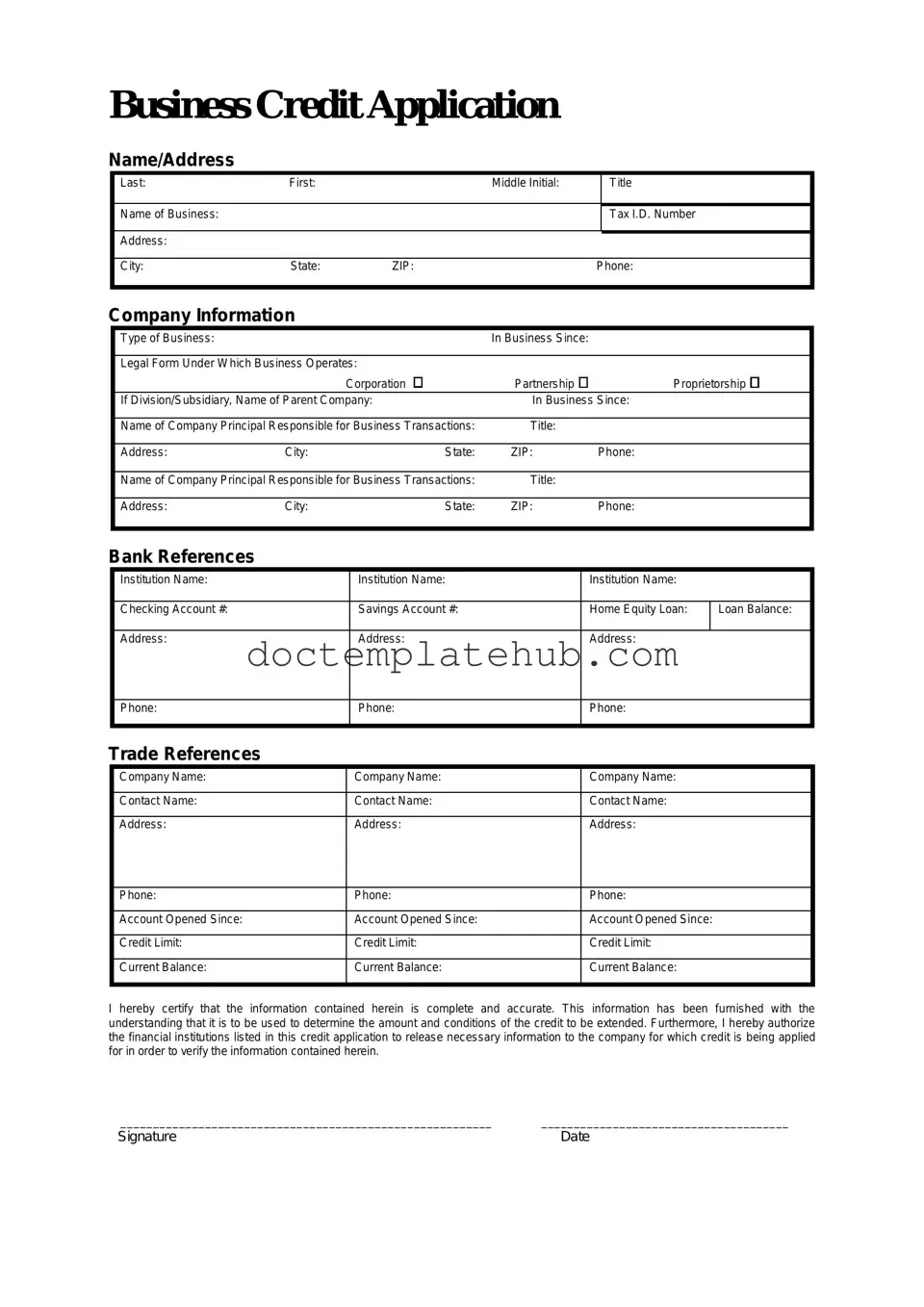What is a Business Credit Application form?
The Business Credit Application form is a document that businesses complete to request credit from suppliers or lenders. This form typically collects essential information about the business, including its legal structure, financial history, and creditworthiness. By filling out this application, a business seeks to establish a credit line that can help manage cash flow and facilitate purchases without immediate payment.
Why is the Business Credit Application important?
This application serves several critical purposes. First, it helps lenders or suppliers assess the risk associated with extending credit. They will review the information provided to determine whether the business is likely to repay its debts. Additionally, it establishes a formal record of the business’s request for credit, which can be useful for future reference and accountability.
What information do I need to provide on the form?
Typically, you will need to provide details such as your business name, address, and contact information. Financial information, including annual revenue and existing debts, is also required. Furthermore, personal information about the business owner(s), such as Social Security numbers and personal credit history, may be necessary to evaluate the application comprehensively.
How long does it take to process the Business Credit Application?
The processing time can vary significantly depending on the lender or supplier. Generally, it can take anywhere from a few hours to several days. Factors influencing this timeline include the complexity of the application, the responsiveness of the applicant, and the lender’s internal processes. It’s advisable to follow up after submitting the application to ensure it is being processed in a timely manner.
What happens if my application is denied?
If your application is denied, you will typically receive a notification explaining the reasons for the decision. Common reasons for denial include insufficient credit history, low credit scores, or inadequate financial information. Understanding these reasons can help you address any issues and improve your chances of approval in the future. You may also have the option to appeal the decision or apply again after making necessary adjustments.
Can I apply for business credit without a personal guarantee?
In many cases, lenders will require a personal guarantee, especially for new or small businesses without an established credit history. A personal guarantee means that the business owner agrees to be personally responsible for the debt if the business fails to repay it. However, some lenders may offer credit options that do not require a personal guarantee, particularly for businesses with strong financials and a solid credit history.
Is there a fee associated with submitting the Business Credit Application?
Most lenders and suppliers do not charge a fee for submitting a Business Credit Application. However, it’s important to read the terms and conditions carefully. Some lenders may have specific requirements or fees associated with processing the application or setting up a credit account. Clarifying these details upfront can prevent unexpected costs down the line.
